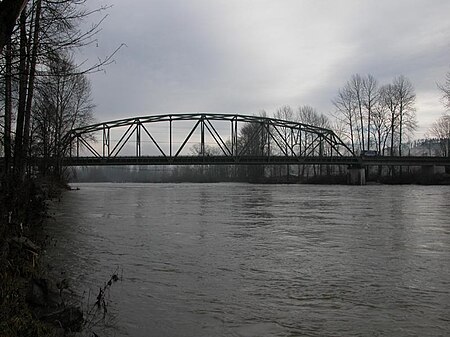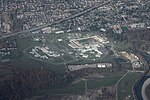Skykomish River

The Skykomish River is a 29-mile (47 km) long river in the U.S. state of Washington which drains the west side of the Cascade Mountains in the southeast section of Snohomish County and the northeast corner of King County. The river starts with the confluence of the North Fork Skykomish River and South Fork Skykomish River approximately one mile west of Index, then flowing northwesterly towards Puget Sound. It is joined by the Sultan River and the Wallace River at Sultan. It then meets the Snoqualmie River to form the Snohomish River at Monroe. The Snohomish River continues along the river valley eventually dumping into Port Gardner Bay on Possession Sound (part of Puget Sound). The name "Skykomish" comes from the Lushootseed name of the Skykomish people, sq̓ixʷəbš, meaning "upriver people." It is sometimes referred to by the nickname "Sky River" or "The Sky".
Excerpt from the Wikipedia article Skykomish River (License: CC BY-SA 3.0, Authors, Images).Skykomish River
State Highway 522,
Geographical coordinates (GPS) Address Nearby Places Show on map
Geographical coordinates (GPS)
| Latitude | Longitude |
|---|---|
| N 47.830277777778 ° | E -122.04666666667 ° |
Address
State Highway 522
State Highway 522
98296
Washington, United States
Open on Google Maps




